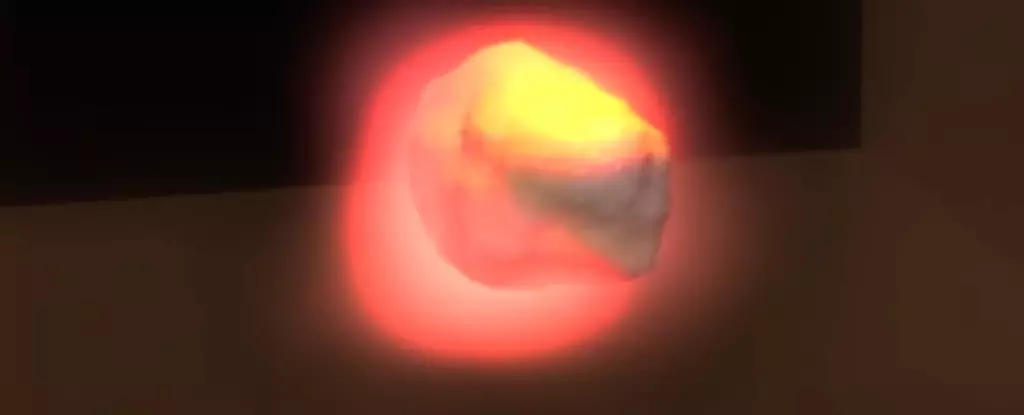NASA’s Curiosity rover has made a groundbreaking discovery that reverberates across the realms of astrobiology and planetary science. It has detected the largest organic molecules ever found on Mars, a finding that has the potential to reshape our understanding of the red planet’s past. In a historical context, such organic compounds, especially long-chain carbon molecules, have been intimately associated with biological processes here on Earth. These discoveries provide tantalizing evidence that Mars may not have been the barren landscape it appears to be today.
The detection of these carbon-containing molecules is particularly significant because, on our planet, they often serve as the building blocks of life. The molecules found may be fragments of fatty acids, essential components of cell membranes in living organisms. The weight of this discovery suggests the possibility that microbial life could have once thrived in Mars’s ancient environment, a notion that captivates and challenges our perspective on extraterrestrial biology.
A Window to Mars’ Geologic Past
The organic chains detected by Curiosity came from a 3.7 billion-year-old Martian rock known as Cumberland, located in what is hypothesized to be a dried-up lakebed within Gale Crater. This geological setting is crucial; it presents the ideal conditions for life to flourish during Mars’ distant past. By utilizing the rover’s Sample Analysis at Mars (SAM) instrument, scientists were able to perform in-depth analyses that revealed the presence of various complex organic molecules, including alkanes like decane and dodecane—hydrocarbon chains characterized by their length and structure.
What is particularly fascinating is that researchers were originally on the hunt for amino acids—fundamental units necessary for life’s building blocks. Instead, they serendipitously unearthed an unexpected yet equally significant trove of organic chemical compounds. This discovery serves not only to expand our knowledge of potential life-sustaining compounds on Mars but also demonstrates the serendipitous nature of scientific exploration.
Implications for Future Missions
The implications of this discovery extend beyond mere curiosity. The Mars Sample Return mission—a collaborative effort between NASA and the European Space Agency—aims to bring Martian rock and soil samples back to Earth for comprehensive analysis. The hope lies in the advanced scientific capabilities available in terrestrial laboratories; these tools could unveil a clearer picture of whether life ever existed on Mars. However, challenges loom: recent budgetary critiques have prompted a reevaluation of how this ambitious mission can proceed effectively. As such, the next steps hinge on strategic planning and securing the necessary resources.
The findings at Cumberland, where sedimentary rock forms evoke conditions replicative of ancient lakes on Earth, amplify the need for such missions. Curiosity’s exploration goal to ascertain past habitability renders this discovery a promising milestone. Analyzing rock formations formed by sediment build-up opens a dialogue about the environmental conditions that prevailed on ancient Mars and invites scientific inquiry into the planet’s biological potential.
Understanding the Origins of Organic Molecules
Scientists speculate that the alkane molecules could be more than remnants of ancient biological activity. It remains uncertain whether they were formed abiotically—through non-living processes—or were indeed derived from life. Such ambiguity raises important questions concerning the mechanisms that produce these complex molecules on Mars. Furthermore, the robustness of the organic materials found amidst billions of years of cosmic exposure showcases their remarkable preservation, offering astrobiologists a glimmer of hope that the traces of ancient life might be discernible even in a hostile environment.
Moreover, the shells of carbon compounds could still hold even longer carbon chains or more intricate biomolecules that traditional rover instruments are incapable of detecting. As we speculate on the potential for life on Mars, it becomes increasingly apparent that each new discovery redefines our scientific narratives and ignites public imagination about the possibilities of life beyond Earth.
The Intersection of Scientific Discovery and Human Imagination
The dialogue around these discoveries extends beyond the scientific community and touches the broader human experience. As curiosity propels our quest beyond our planet, the implications of finding organic molecules on Mars reverberate within society, prompting existential reflections about our own origins and the potential existence of life elsewhere. The enormity of the search for life on Mars transcends scientific inquiry; it embodies humanity’s inherent desire to explore, to understand our place in the cosmos, and to forge connections with the unknown.
As we move towards future Martian explorations, the quest fueled by discovery will continue to foster not only innovative scientific advancements but will also inspire generations to pursue understanding and engagement with the universe at large. The narrative of Mars is still being written, and each new finding carves out a path for future exploration, driving humanity’s unyielding pursuit of knowledge.


Leave a Reply